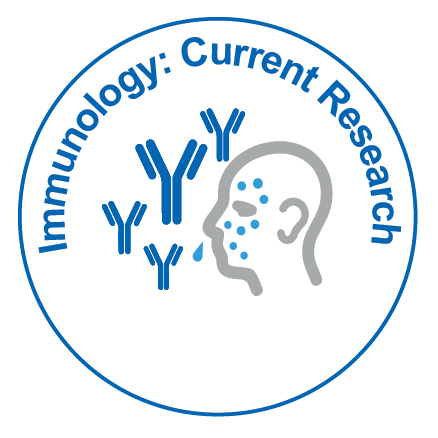Exploring the Diversity and Function of Immunoglobulins in Immunity
Received: 03-Mar-2025 / Manuscript No. icr-25-166424 / Editor assigned: 05-Mar-2025 / PreQC No. icr-25-166424 (PQ) / Reviewed: 19-Mar-2025 / QC No. icr-25-166424 / Revised: 24-Mar-2025 / Manuscript No. icr-25-166424 (R) / Accepted Date: 30-Mar-2025 / Published Date: 30-Mar-2025
Abstract
Immunoglobulins, commonly known as antibodies, are crucial components of the adaptive immune system responsible for recognizing and neutralizing pathogens. This article explores the remarkable diversity of immunoglobulins, highlighting the structural variations and genetic mechanisms that enable the immune system to generate a vast repertoire of antigen-specific antibodies. The five major classes of immunoglobulins IgG, IgA, IgM, IgE, and IgD are examined in terms of their distinct functions, distribution, and roles in immune defense. Furthermore, the article discusses the dynamic processes of immunoglobulin production by B cells, including class switching and affinity maturation, which optimize immune responses. Understanding the diversity and function of immunoglobulins provides insight into their critical role in host protection, autoimmune disorders, and their therapeutic potential in immunotherapy and vaccine development.
Keywords
Immunoglobulins; Antibodies; Immune system; Humoral immunity; Antigen recognition; Immunoglobulin classes; Adaptive immunity
Introduction
The immune system is a sophisticated network designed to protect the body against a vast array of pathogens, including bacteria, viruses, fungi, and parasites. Central to this defense system are immunoglobulins, or antibodies, which serve as specialized proteins that identify and neutralize foreign invaders. Produced primarily by B lymphocytes, immunoglobulins play a pivotal role in humoral immunity, the arm of the adaptive immune response responsible for targeting extracellular pathogens [1]. One of the most remarkable features of immunoglobulins is their incredible diversity, which enables the immune system to recognize an almost limitless variety of antigens. This diversity arises from complex genetic rearrangements and modifications during B cell development, allowing the generation of antibodies with unique antigen-binding sites [2]. Additionally, immunoglobulins are classified into different isotypes IgG, IgA, IgM, IgE, and IgD each with distinct structural characteristics and specialized functions tailored to various immune challenges [3]. This article aims to delve into the diverse nature of immunoglobulins, exploring their structural variations, functional roles, and the biological processes governing their production and action. A deeper understanding of immunoglobulins is essential not only for comprehending immune defense mechanisms but also for advancing medical applications such as vaccine design, immunotherapy, and treatment of immune-related diseases [4].
Discussion
Immunoglobulins exhibit remarkable diversity and versatility, making them indispensable to the immune system’s ability to recognize and respond to a wide array of pathogens. This diversity primarily stems from the genetic mechanisms of V(D)J recombination, somatic hypermutation, and class switch recombination, which collectively enable B cells to produce antibodies with high specificity and varied effector functions [5]-[7]. The distinct classes of immunoglobulins IgG, IgA, IgM, IgE, and IgD each play specialized roles in immunity. For example, IgG is the most abundant antibody in serum and is crucial for opsonization and neutralization of pathogens, while IgA predominates in mucosal surfaces, providing a first line of defense in respiratory and gastrointestinal tracts. Moreover, the functional plasticity of immunoglobulins extends beyond simple pathogen neutralization [8]. They participate in immune complex formation, activation of the complement system, and engagement of various immune cells through Fc receptors, thereby orchestrating a coordinated immune response. The dysregulation of immunoglobulin production or function can lead to pathological conditions, including autoimmune diseases, allergies, and immunodeficiencies, underscoring their importance in maintaining immune homeostasis [9]. In clinical contexts, immunoglobulins have found therapeutic applications, ranging from monoclonal antibody therapies targeting cancers and autoimmune diseases to intravenous immunoglobulin (IVIG) treatments for immune deficiencies [10]. Advances in biotechnology continue to harness the diversity of antibodies for novel diagnostic and therapeutic tools, highlighting the translational significance of understanding immunoglobulin biology.
Conclusion
Immunoglobulins are central to the adaptive immune response, offering remarkable diversity and functional specialization that enable effective protection against a multitude of pathogens. Their unique ability to recognize specific antigens, coupled with varied effector functions, underscores their essential role in immune defense and homeostasis. Continued research into the mechanisms governing immunoglobulin diversity and function not only deepens our understanding of immune biology but also drives innovation in clinical therapies. As immunoglobulin-based treatments expand, the exploration of their diverse roles will remain vital in advancing healthcare and combating infectious and immune-related diseases.
Acknowledgement
None
Conflict of Interest
None
Citation: Ashly B (2025) Exploring the Diversity and Function of Immunoglobulinsin Immunity. Immunol Curr Res, 9: 254.
Copyright: © 2025 Ashly B. This is an open-access article distributed under theterms of the Creative Commons Attribution License, which permits unrestricteduse, distribution, and reproduction in any medium, provided the original author andsource are credited.
Select your language of interest to view the total content in your interested language
Share This Article
Recommended Journals
Open Access Journals
Article Usage
- Total views: 258
- [From(publication date): 0-0 - Oct 14, 2025]
- Breakdown by view type
- HTML page views: 195
- PDF downloads: 63
